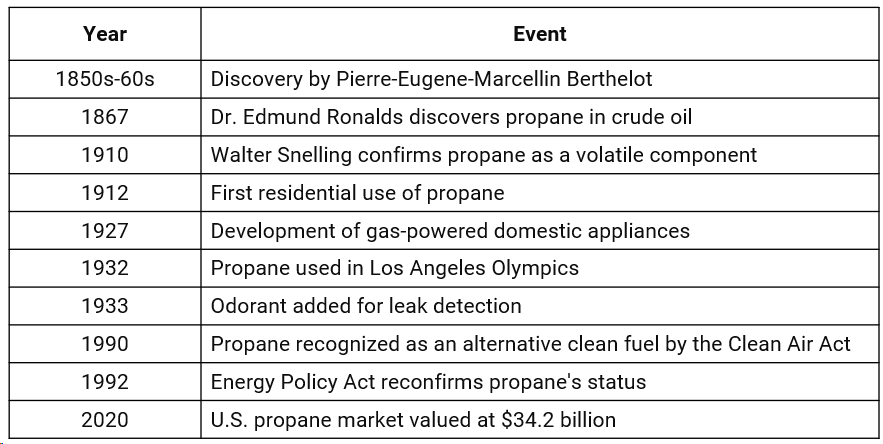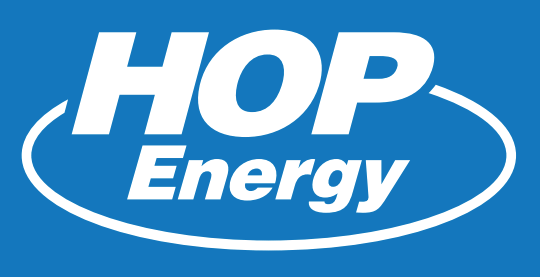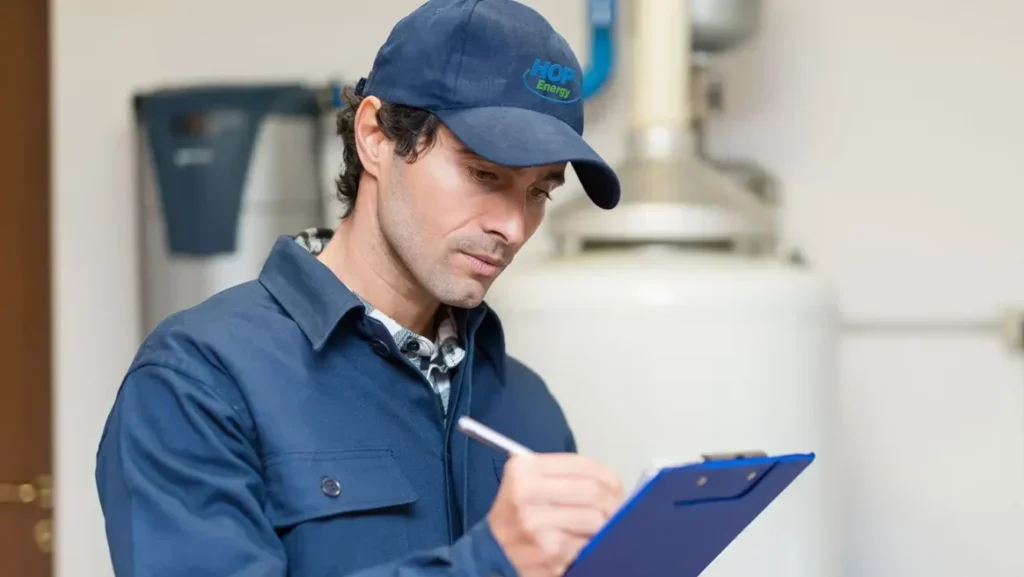Propane has become a vital fuel source for homes worldwide, offering efficiency and versatility in various applications. Initially used for metal cutting and blowtorches, propane quickly gained popularity for residential heating, cooking, and other domestic uses. This article explores the history of propane, from its origins to its modern-day applications, highlighting its development and adoption as a preferred home fuel.
Table of Contents
Origins of Propane
Propane’s history began in the mid-19th Century. French chemist Pierre-Eugene-Marcellin Berthelot first synthesized propane in the 1850s and ’60s while experimenting with organic compounds. However, it wasn’t until 1867 that industrial chemist Dr. Edmund Ronalds discovered propane as a naturally occurring substance in Pennsylvania crude oil. In 1910, American chemist Walter Snelling identified propane as a volatile component in gasoline. While investigating vapors from a Ford Model T, Snelling realized propane’s potential as a fuel source, leading to its commercialization.
Early Development and Adoption
In the early 20th Century, propane’s potential as a fuel source began to be realized. In 1912, Snelling marketed propane as liquefied petroleum gas (LPG) and facilitated its first residential use. Propane’s initial applications included metal cutting and blowtorches. By 1918, the first LPG-fueled pumpless blowtorch was introduced. Throughout the 1920s, propane’s uses expanded, leading to the development of gas-powered domestic cooking appliances in 1927. These innovations began propane’s widespread adoption in homes and various industries.
Historical Timeline Chart: Propane's History

Propane in the 20th Century
Propane’s adoption grew significantly during the 20th Century. A notable milestone occurred during the 1932 Los Angeles Olympics, where propane was used to power cooking and water heating appliances in the Olympic Village. In 1933, an odorant was added to propane, which is naturally odorless, to help detect leaks—a safety measure that continues today. Throughout the 1920s and 1930s, propane sales soared as its applications expanded. By the mid-20th Century, propane was used in residential heating, cooking, water heaters, clothes dryers, and grills, establishing itself as a reliable and versatile home fuel.
Propane's Evolution and Modern Use
Propane’s role as a clean and efficient fuel was solidified in the late 20th Century. The 1990 Clean Air Act recognized propane as an alternative clean fuel, highlighting its lower emissions than other fossil fuels. The 1992 Energy Policy Act reinforced this recognition. Propane’s popularity continued growing, with its applications expanding in residential and commercial sectors. By 2020, the U.S. propane market was valued at $34.2 billion. Today, propane is used for heating, cooking, water heating, and powering generators, reflecting its evolution into a critical component of modern energy solutions.
Global Production and Distribution
Propane production and distribution are integral to meeting the global demand for this versatile fuel. Most of the propane is produced through natural gas processing and oil refining. In North America, significant quantities are produced in the United States and Canada.
Canada plays a crucial role in the global propane market, exporting substantial amounts to the United States. Approximately 85% of Canadian propane is produced from natural gas processing, with the remaining 15% derived from oil refining. Propane extracted during these processes is stored in massive underground salt caverns, holding millions of barrels to ensure a steady supply throughout the year.
After production, propane is transported in liquid form via pipelines, rail, trucks, and ships to various distribution points. At these points, it is stored in large tanks before being distributed to end-users in smaller cylinders and tanks. This robust infrastructure supports the widespread use of propane in residential, commercial, agricultural, and industrial applications globally.
Interesting Facts and FAQs About Propane
Why is a propane tank called a "pig"?
Propane tanks are nicknamed “pigs” due to their rounded, stout shape that resembles a pig’s body.
What is the origin of propane?
Propane was first synthesized by Pierre-Eugene-Marcellin Berthelot in the 1850s and identified as a naturally occurring substance by Dr. Edmund Ronalds in 1867.
Where is propane found naturally?
Propane is found naturally in crude oil and natural gas. It is separated from these sources during the refining and gas processing stages.
Who is the father of propane?
Walter Snelling is considered the father of propane for his work in 1910 when he identified and commercialized propane as a fuel source.
Is propane a man-made gas?
While propane can be synthesized in a laboratory, it is primarily extracted from natural gas and crude oil, making it both naturally occurring and man-made.
What is the cleanest fuel to burn?
Propane is one of the cleanest burning fossil fuels, producing fewer carbon emissions than coal, gasoline, and other petroleum products.
What is the nickname for propane?
Propane is called LPG, which stands for liquefied petroleum gas.
Why is propane called LP?
Propane is called LP, short for liquefied petroleum because it is stored and transported in a liquid state under pressure.
Does propane go bad?
Propane does not go bad. Unlike other fuels, it remains stable and effective after long storage periods. However, the storage tank may require inspection and maintenance to ensure safety and functionality.

Conclusion
Propane’s journey from its discovery in the 19th Century to its widespread use today illustrates its evolution into a vital and versatile fuel source. Initially identified by chemists like Pierre-Eugene-Marcellin Berthelot and Walter Snelling, propane quickly transitioned from laboratory curiosity to commercial viability. Its early applications in metal cutting and domestic appliances paved the way for broader use in residential heating, cooking, and industrial applications.
Throughout the 20th Century, propane’s adoption grew due to its efficiency, reliability, and environmental benefits. Legislative acts like the 1990 Clean Air Act and the 1992 Energy Policy Act further cemented propane’s status as a clean alternative fuel. Propane is a critical energy source, valued for its stability, clean-burning properties, and diverse applications.
As we look to the future, propane’s role in providing sustainable and efficient energy solutions remains strong. Its ability to meet the demands of various sectors while minimizing environmental impact ensures that propane will continue to be an essential component of the global energy landscape.




